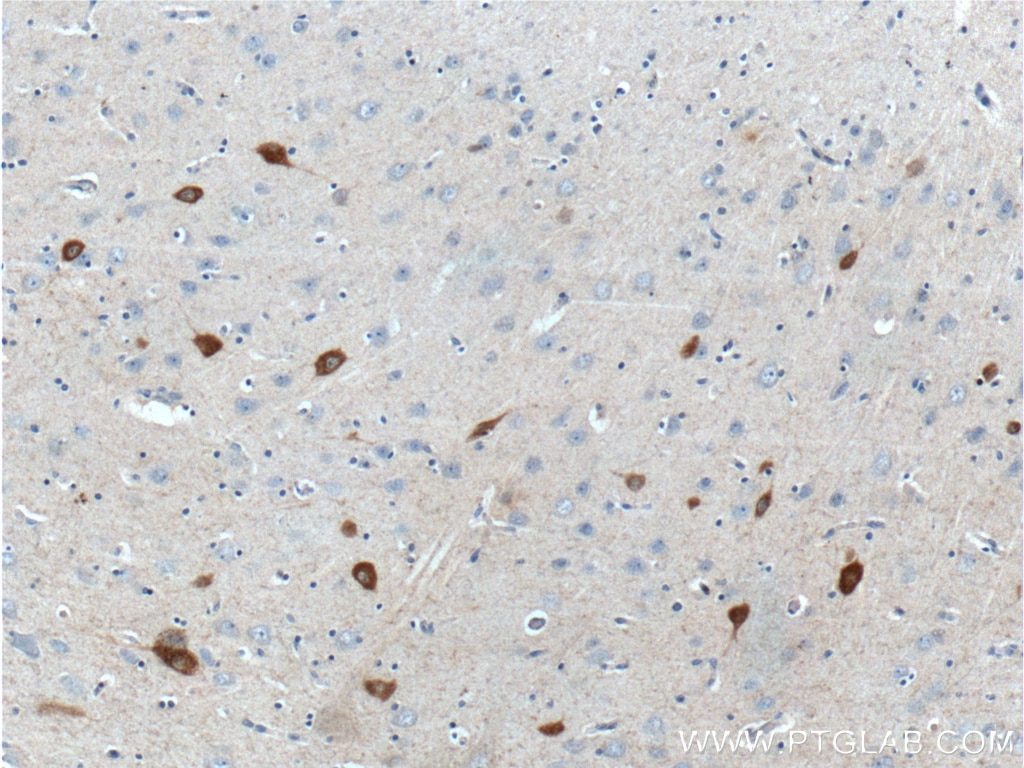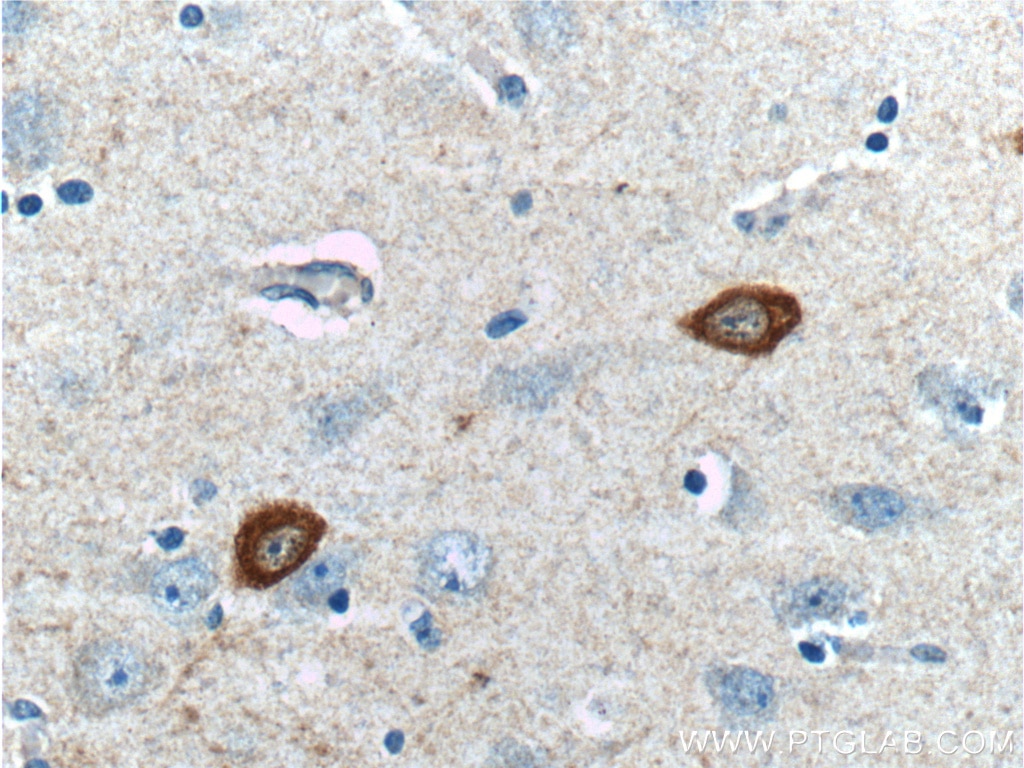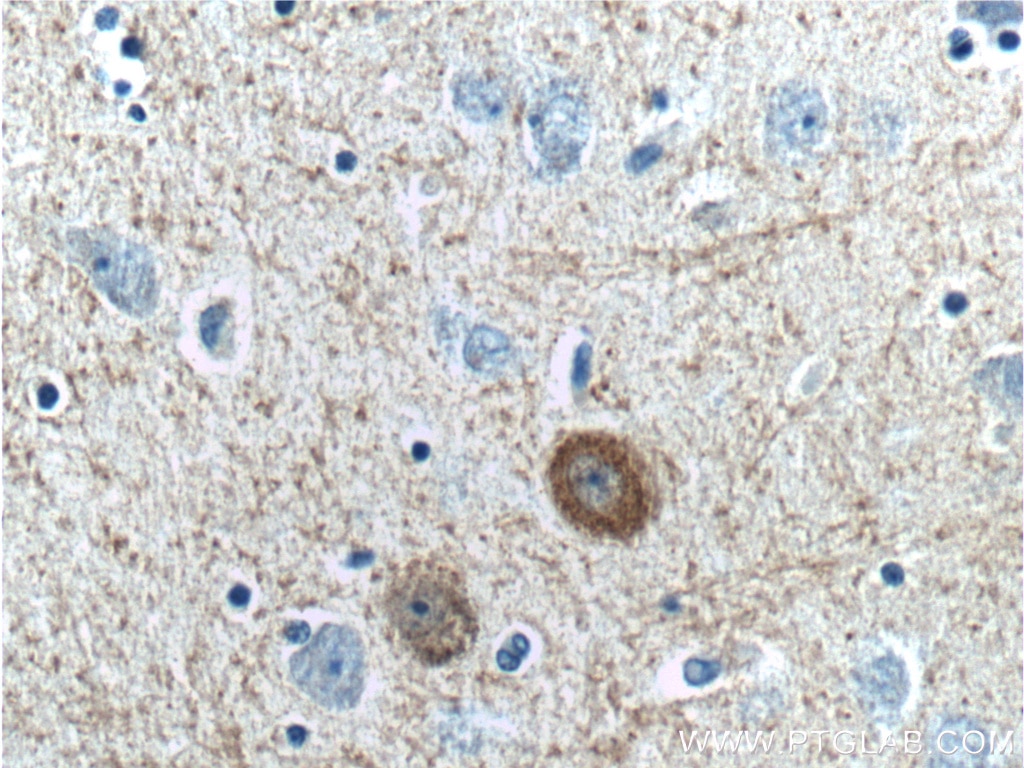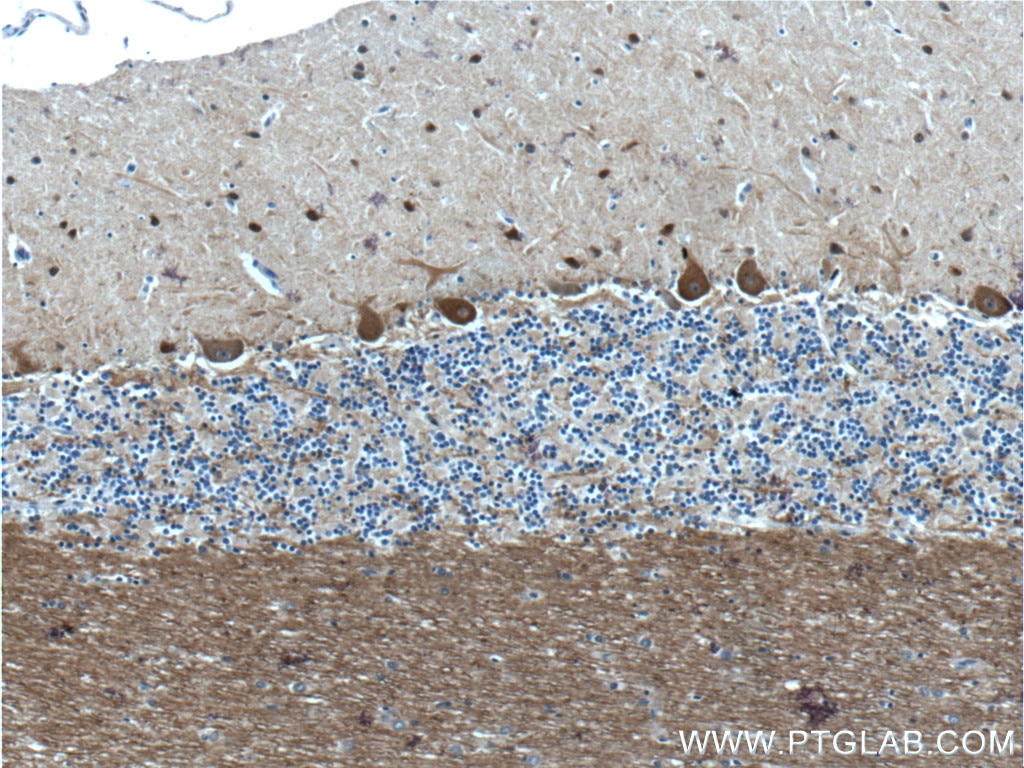Validation Data Gallery
Tested Applications
| Positive IHC detected in | human brain tissue, mouse brain tissue, human cerebellum tissue Note: suggested antigen retrieval with TE buffer pH 9.0; (*) Alternatively, antigen retrieval may be performed with citrate buffer pH 6.0 |
Recommended dilution
| Application | Dilution |
|---|---|
| Immunohistochemistry (IHC) | IHC : 1:50-1:500 |
| It is recommended that this reagent should be titrated in each testing system to obtain optimal results. | |
| Sample-dependent, Check data in validation data gallery. | |
Published Applications
| WB | See 6 publications below |
| IHC | See 3 publications below |
| IF | See 3 publications below |
Product Information
26521-1-AP targets Parvalbumin in WB, IHC, IF, ELISA applications and shows reactivity with human, mouse samples.
| Tested Reactivity | human, mouse |
| Cited Reactivity | human, mouse, rat, pig |
| Host / Isotype | Rabbit / IgG |
| Class | Polyclonal |
| Type | Antibody |
| Immunogen | Peptide 相同性解析による交差性が予測される生物種 |
| Full Name | parvalbumin |
| Calculated molecular weight | 12 kDa |
| Observed molecular weight | 12 kDa |
| GenBank accession number | NM_002854 |
| Gene Symbol | Parvalbumin |
| Gene ID (NCBI) | 5816 |
| RRID | AB_2880541 |
| Conjugate | Unconjugated |
| Form | Liquid |
| Purification Method | Antigen affinity purification |
| UNIPROT ID | P20472 |
| Storage Buffer | PBS with 0.02% sodium azide and 50% glycerol pH 7.3. |
| Storage Conditions | Store at -20°C. Stable for one year after shipment. Aliquoting is unnecessary for -20oC storage. |
Background Information
PVALB is a high affinity calcium ion-binding protein that is structurally and functionally similar to calmodulin and troponin C. PVALB is expressed in high levels only in fast-contracting muscles and at lower levels in brain and several endocrine tissues. It is thought to be involved in muscle relaxation.
Protocols
| Product Specific Protocols | |
|---|---|
| IHC protocol for Parvalbumin antibody 26521-1-AP | Download protocol |
| Standard Protocols | |
|---|---|
| Click here to view our Standard Protocols |
Publications
| Species | Application | Title |
|---|---|---|
Food Chem TMT-based quantitative proteomic analysis of porcine muscle associated with postmortem meat quality. | ||
Transl Psychiatry Gabrb2-knockout mice displayed schizophrenia-like and comorbid phenotypes with interneuron-astrocyte-microglia dysregulation. | ||
Front Cell Dev Biol Brevican, Neurocan, Tenascin-C, and Tenascin-R Act as Important Regulators of the Interplay Between Perineuronal Nets, Synaptic Integrity, Inhibitory Interneurons, and Otx2. | ||
J Nutr Biochem Postnatal high-fat diet sex-specifically exacerbates prenatal dexamethasone-induced hypertension: Mass spectrometry-based quantitative proteomic approach. | ||
Environ Toxicol Evaluation of TRPM2 Channel-Mediated Autophagic Signaling Pathway in Hippocampus and Cortex Tissues of Rat Offspring Following Prenatal Exposure to Elevated Alcohol Levels | ||
Microsc Res Tech Immunohistological study of the unexplored vomeronasal organ of an endangered mammal, the dama gazelle (Nanger dama) |







